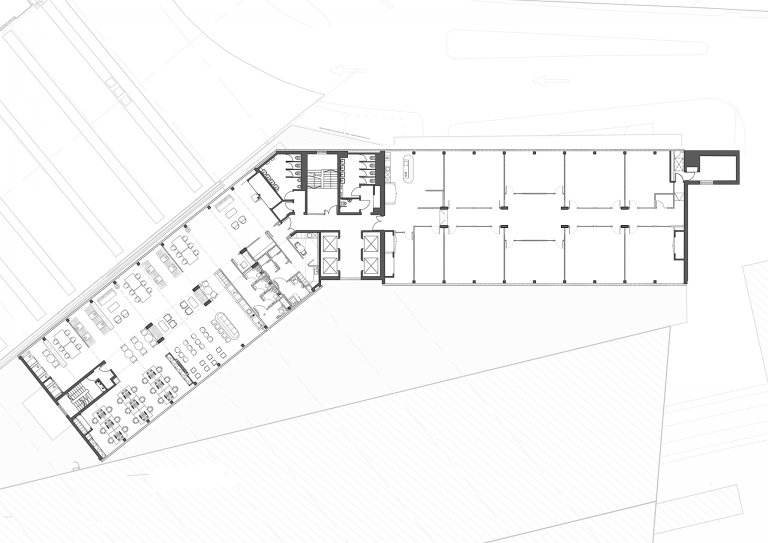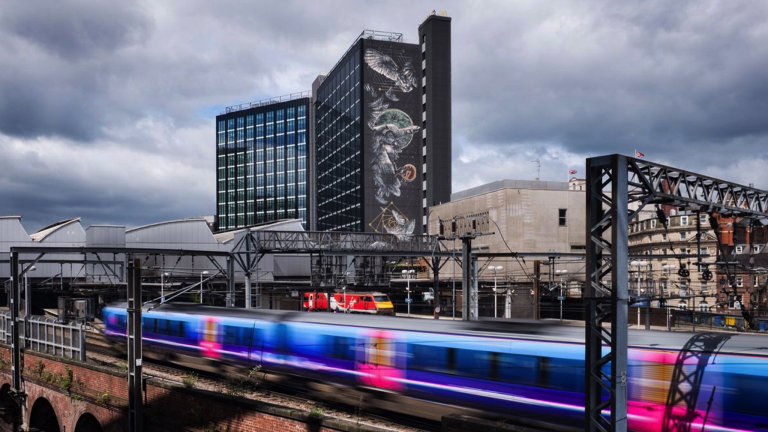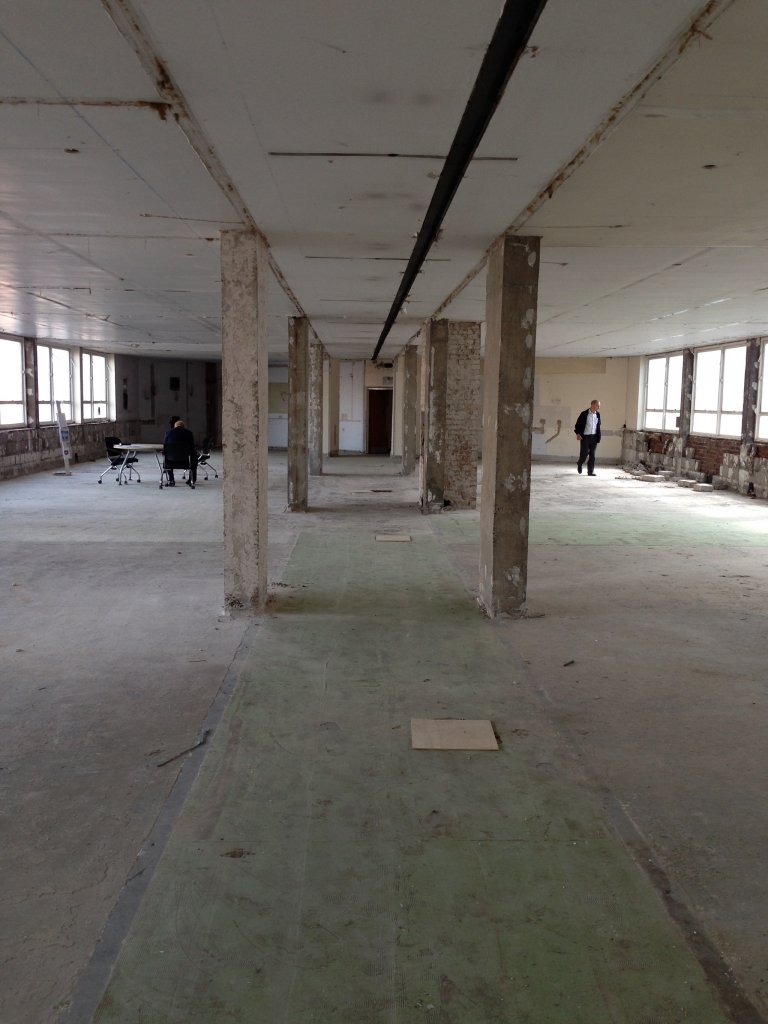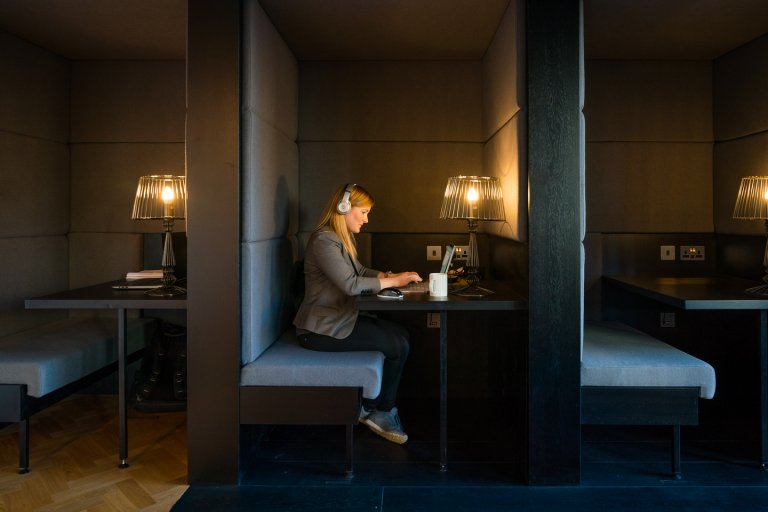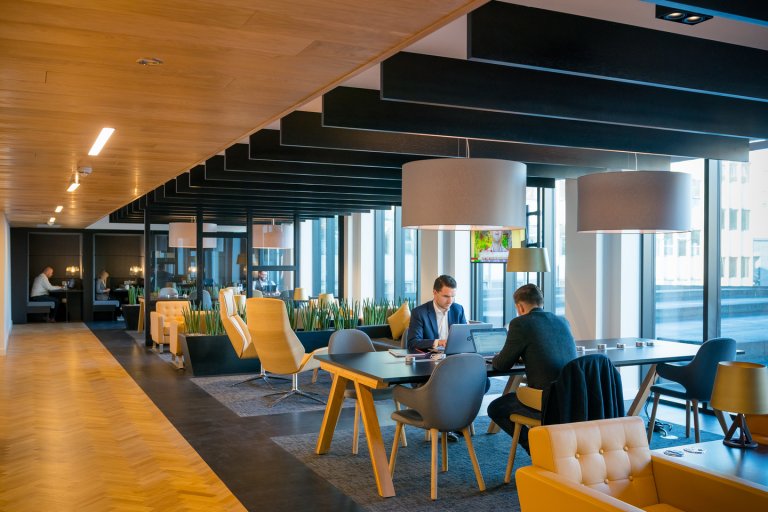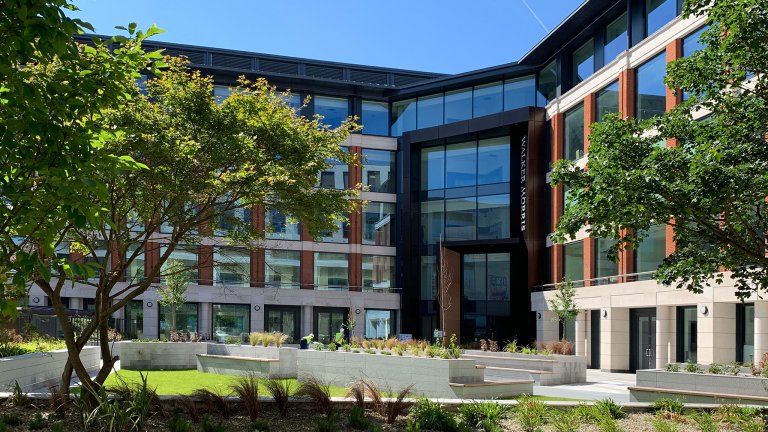
Project summary
- Client: Bruntwood
- Location: Leeds
- Discipline: Architecture
- Sector: Workplace
- Size: 120,000 SQFT, 13 Storeys
- Value: £14.5 million
- Status: Completed
Awards
- Yorkshire Property AwardsGame Changer | Winner | 2019
- Inca AwardsArchitectural Design Award | Finalist | 2019
- Inca AwardsBest Refurbishment | Finalist | 2018
- Architect’s JournalRetrofit Awards | Finalist | 2018
- BCO Awards 2019Refurbished & Recycled Workplace | Finalist | 2019
Story
Platform is an example of a progressive, innovative approach to recycling our built assets. Platform – once known as City House – was a former British Railways office building designed by the disgraced ‘architect’ John Poulson and built in 1962. The 13-storey, 120,000 sq ft building located right above the city’s mainline railway station touches the ground in only three locations. The land and roads around the building were outside the control of the owner and the project team. The project demonstrates a sympathetic yet ambitious approach to a modern challenge; how to make best use of an existing building – and make a spectacular contribution to the city – within the remit and budget of refurbishment.
Innovations & Solutions
The project offered exceptional construction challenges due to location over the busiest station in the north of England, with over 30 million passengers annually, which was to be continuously run throughout. Scaffolding was prohibitive, therefore the building was to be entirely re-skinned from cradles. Internal interventions needed to be functional but flexible and embed 30+ years’ of future usability in to the fabric of the existing building.
Our approach was about more than beautifying an eyesore. It was about improving the relationship between city and building, for a wider benefit beyond our site boundary. It was about embedding longevity and improving the experience of occupants within. It is, at the same time, a landmark reborn on the Leeds skyline, and a canvas for artwork that will be continuously renewed over the years.
The most novel aspect of the building posed the construction’s most significant challenge; a building of this scale, which only touches the ground in three locations, sitting over a fully operating transport interchange. The land around the building is owned by Network Rail and as such the contractor was unable to land any scaffolding, therefore the works had to be carried out without the use of scaffolding using roof mounted suspended gantries.
A “hole” was formed in the pavement immediately next to the building into which a hoist was installed , travelling from a basement level to the thirteenth floor. This hoist and hole were critical to the construction of the building for example it was the sole access for the workforce (available at certain times of the day) ALL materials removed from the building left via this hoist and almost ALL new materials were carried to site via this hoist. A sophisticated and tracked materials storage area was created in the basement with deliveries arriving a set times and then loaded out to the floor plates during the night and day.
Following significant negotiation with Network Rail, the station management team, the taxi operators, METRO and the other local bus operators a partial road closure was achieved to New Station Street enabling the installation of the low level link bridge structure.
Sustainability
The building’s prime location above the train station in the city centre promote the use of public transport and the reformed basement and mezzanine levels encourage people to arrive by bicycle or on foot.
A key focus of the project was to construct an energy efficient building that allowed both Bruntwood and the occupying tenants to reduce their carbon footprint and thrive in the internal environment. To do this the designers took a ‘Lean, Mean, Green’ approach.
The existing building envelope was transformed by replacing the entire north and south facades with high performance fabric and solar control glazing, while maintaining the existing structure to create a building that consumed considerably less energy than its predecessor. Heat recovery technology, innovative water conservation measures and high efficiency lighting and controls were installed to further reduce the building’s energy needs.
The central plant of the existing building has been replaced by a modular building services strategy to ensure that only the occupied areas of the building are being heated, cooled and lit.
The client’s aspirations for a highly performing landmark building was met by the design and construction team’s collaborative approach. The architectural and engineering designs, along with well managed considerate construction processes resulted in a building that achieved a BREEAM ‘Excellent’ rating. The collaborative working, tech hub and office spaces all achieved an ‘A’ rated EPC and paid careful consideration to the wellness benefits of natural light, fresh air, water quality and promotion of an active lifestyle.
A comprehensive energy monitoring system is installed within Platform that logs the building’s energy use. Water, lighting, space heating/cooling and small power are monitored independently for all zones of the building and logged on the central building management system enabling the facilities management team to access the building’s performance post occupancy. Based upon the BREEAM LZC report, the baseline emissions were 28.3 kgCO2/m2, therefore the refurbished building achieved a 30.67% reduction in CO2 emissions over the existing baseline building.

